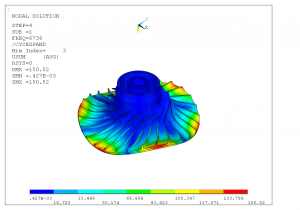
Here, the SAVE command below uses the MODEL argument so that the DB database file does not contain a result. The in-memory results database RAM requirement is therefore smaller, as is the RST results file. Another /CONFIG command prevents the node-and-element model from being written to the results file during SOLVE. A /CONFIG command prevents writing derived element data (stress, strain, etc) to the in-memory database. Here, the following input file generates an example. The above /CONFIG command for the results file will keep the written file smaller by eliminating the node-and-element data from the results file. The /POST1 command RESWRITE file can do this. On rare occasions, a user may want to write a single result into a results file for future use. CONFIG,NORSTGM,1 ! do not write geometry on results file CONFIG,NOELDB,1 ! do not write element results into database Indeed, these are executed from the BEGIN level in Ansys, and would typically be used before any SOLVE command: There are two /CONFIG commands in ANSYS that (1) prevent element (derived) results from being included in the in-memory database, and (2) prevent node-and-element data from being included in the RST results file.

However, even if the RST results file contains only one solution, a very large database size can result when node-and-element data is included by default. When users deal with large Mechanical APDL models, the DB database files and the RST results files can become very large.

How to Separate DB Database Files from RST Files DB Files & Mechanical APDL Models | Ansys Workbench Industrial Equipment and Rotating Machinery.Torsional Vibration Measurements Testing.Fluid Flow & Thermal Applications (CFD).Electronic and Electrical Applications (EM).


 0 kommentar(er)
0 kommentar(er)
